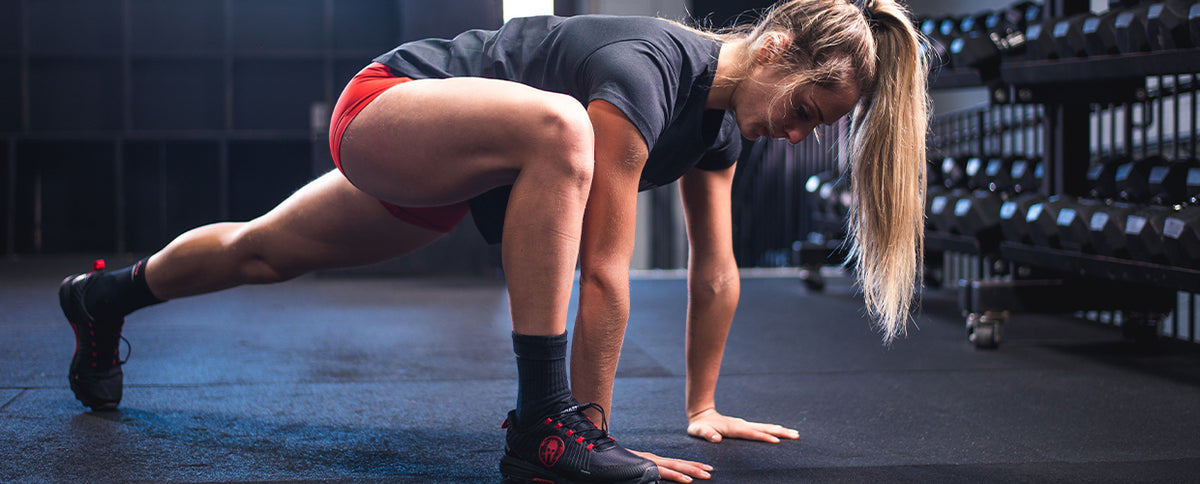Anatomy of a Spartan: Make Your Hips Unbreakable

In Anatomy of a Spartan, a Spartan Fit franchise, we’re taking a joint-by-joint approach to prehab. The result: an unbreakable body. Below, we take a closer look at the hips. For more mobility-inspired workouts, check out the Warm-Ups Collection on the Spartan Fit app.
Your hips are the largest, strongest joint in your entire body—meaning they present your greatest opportunity to optimize athletic performance.
But strengthening the muscles that surround them—your glutes, hamstrings, abductors, and adductors—will only get you so far if you aren’t able to properly move your hips through their full potential range of motion, says Kelly Starrett, DPT, a performance therapy specialist and co-founder of The Ready State. For example, when you run or jump, your hips have to quickly and powerfully flex and extend. If, however, they can only move three-fourths of their nature-intended way, you’re going to have trouble with running speed and jumping over obstacles.
“Spartan races are a wonderful diagnostic tool of hip range of motion,” Starrett says. “It’s moving through the environment and managing body position, all of which is predicated on effectively extending the hips. If you can’t extend effectively, it’s like one of your hands is tied behind your back.”

More athletes have their hands tied than you might suspect: Unless you specifically train hip mobility, it’s easy for workouts to never confront or challenge your hips’ end ranges of motion, Starrett says. When that happens, those available ranges narrow.
Lackluster hip mobility doesn’t just affect performance—it ups the risk of injury through the entire kinetic chain. If your hips don’t move properly, neighboring joints will pick up the slack and, in some cases can become hypermobile, throwing off your body’s alignment and ability to absorb force as it should. That’s why poor hip function is a common cause of knee, ankle, and lumbar spine complaints.
Hip Mobility Exercises Every Athlete Should Do Daily
Mobilize Your Hips with the Lower-Body Spin-Up
This drill, courtesy of Starrett, is a great way to challenge—and expand—your hips’ available ranges of motion, and your ability to properly fire your muscles within those ranges. Try integrating it into your morning routine or your pre-workout or pre-competition warm-ups.
Related: Anatomy of a Spartan: Make Your Toes Unbreakable
For the best results, focus on keeping your body active at all times, as opposed to “hanging” into any of the stretches, he says. Breathe deeply, in through your nose and out through your mouth, and spend some extra time on any areas that feel restricted.
Watch demo videos here on The Ready State and follow the below steps to improve your hip mobility.

1. With your feet hip-width apart, drop your hips into a squat. Let your back round to help you lower your hips as close to the ground as possible, and relax into the position. Try to reach your heels to the ground. Keeping your weight as evenly distributed through your feet as possible, gently sway your torso forward and backward, from side to side, and in circles over your planted legs.
2. Extend one leg out to your side, keeping your hips down to assume a cossack squat. Again, move your body over your planted leg in all directions. Extend your legs to raise your hips into an upside-down V. Walk your hands from one foot to the other back and forth, then lower back down into a cossack over the opposite leg to repeat.
3. Rotate your torso to get into a deep lunge with one knee behind you on the ground. Move your torso from side to side over your font planted leg, keeping your foot flat on the ground at all times. Lower your hands and then arms to the floor as far as comfortable.
4. Do a spinal twist, rotating your torso as far over your front knee as possible. Then place your hands on the ground and walk your hands on the ground away from your lead leg as far as possible.
Related: Anatomy of a Spartan: Make Your Ankles Unbreakable
5. With your hands on the ground next to your lead foot, contract the quads and glutes of your back leg to extend its knee and hip. Your knee should raise from the floor as your hips slightly lower to the floor. Repeat.
6. Slowly extend your lead leg into a hamstrings stretch, then bend your knee to release the stretch. Continue, gradually flexing and extending the ankle as well. Next, add in spinal movement. As your leg flexes straight, tuck your chin toward your chest. This can be very intense: Only move as is comfortable.
7. Bend your lead leg and rest your lead foot on its side in front of you, your knee flaring out as far to the side as possible. Rotate to your torso to turn to one side of your body, then the other.
8. Repeat steps 3-7, then end back at step 1 in the bottom position of a squat, to access any changes in hip mobility.











